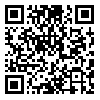Mapping the spatial distribution of soil taxonomic classes is important for useful and effective use of soil and management decisions. Digital soil mapping (DSM) may have advantages over conventional soil mapping approaches as it may better capture observed spatial variability and reduce the need to aggregate soil types. A key component of any DSM activity is the method used to define the relationship between soil observations and environmental covariates. This study aims to compare multiple logistic regression models and covariate sets for predicting soil taxonomic classes in Bam district, Kerman province. The environmental covariates derived from digital elevation models, Landsat imagery, geomorphology map and soil unit map that were divided into two different sets: (1) variables derived from digital elevation models, remote sensing and geomorphology map, (2) variables derived from digital elevation model, remote sensing, geomorphology map and the soil map. Stratified sampling schemes were defined in 100000 hectares, and 126 soil profiles were excavated and described. The results of accuracy model showed that data set 2 increased accuracy of model including overall accuracy, kappa index, user accuracy and reliability of the producer. The results showed that the multiple logistic regression model can promote traditional soil mapping and it can be used to large group of other scientific fields.
Received: 2015/11/18 | Accepted: 2016/06/28 | Published: 2017/06/7
| Rights and permissions | |
 | This work is licensed under a Creative Commons Attribution-NonCommercial 4.0 International License. |




